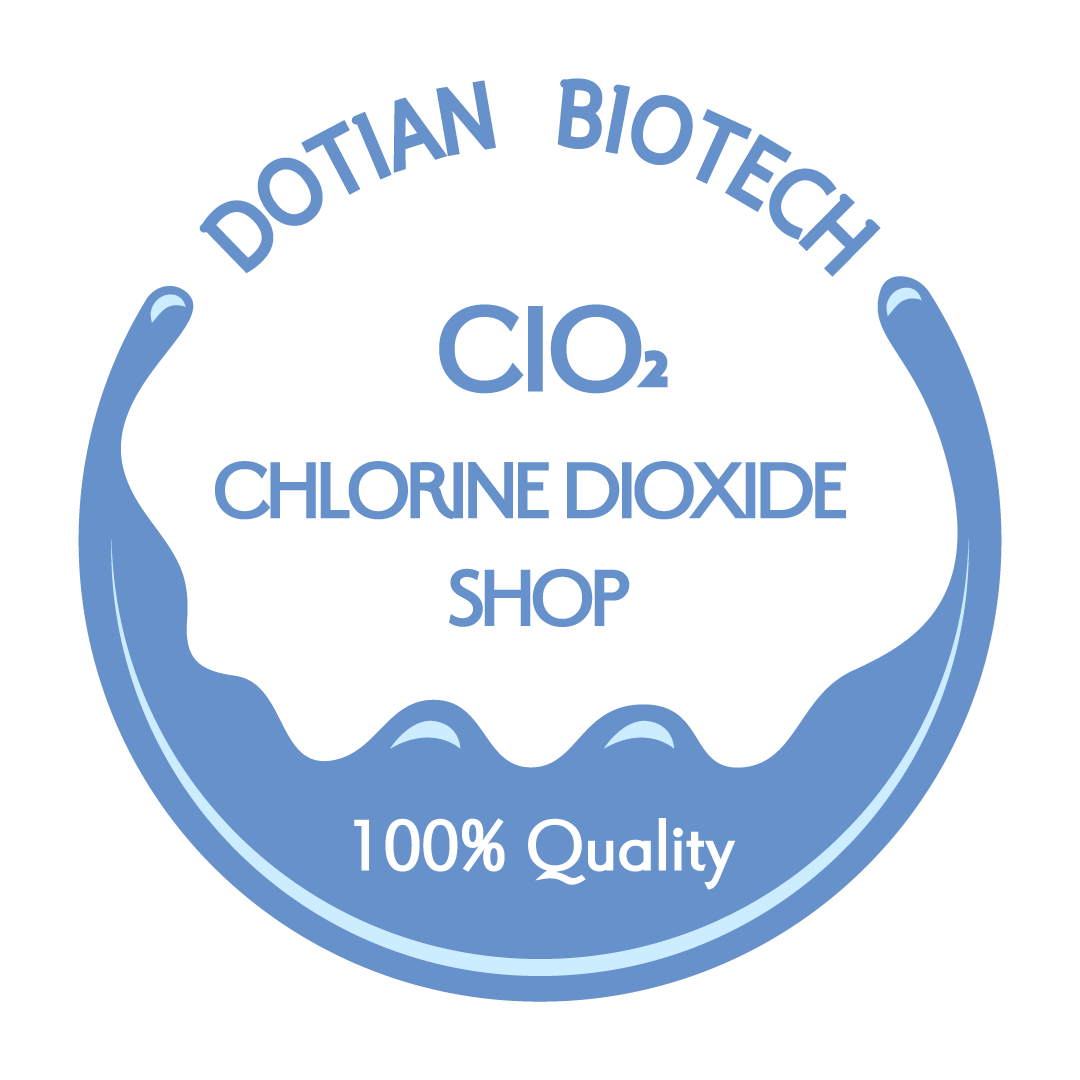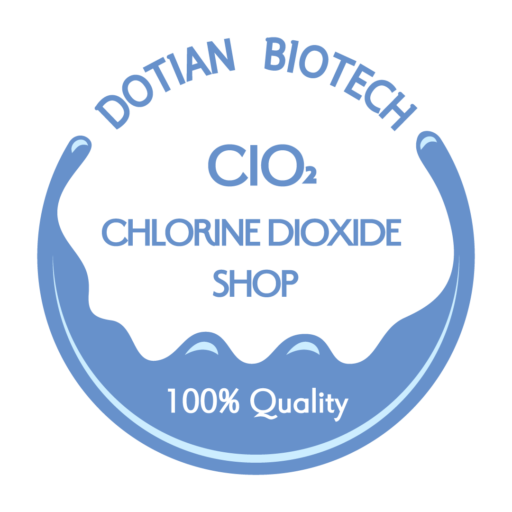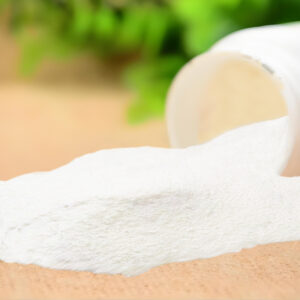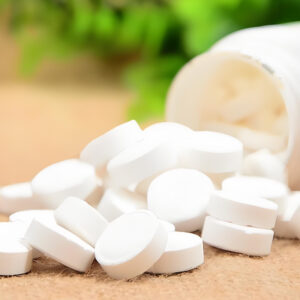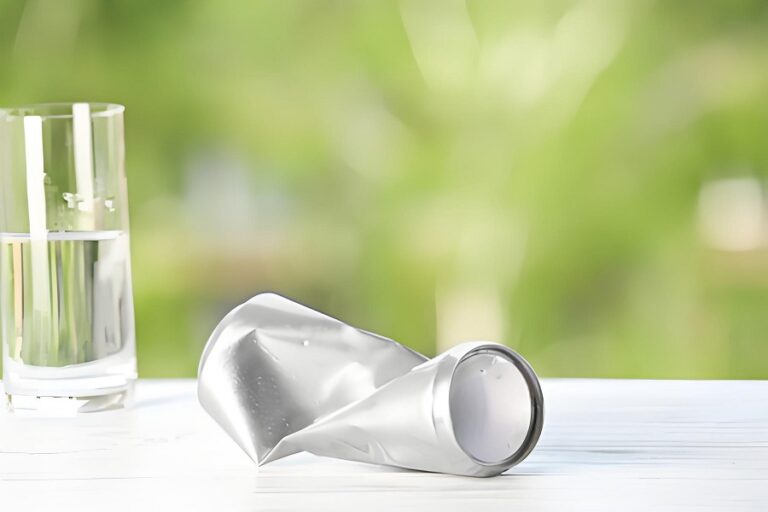Key words: Safe Handling and Storage, Chlorine Dioxide
Chlorine dioxide (ClO2) is a versatile oxidizing agent that is widely recognized for its powerful disinfecting properties. It has become a popular choice across various industries for its efficacy in water treatment, food sanitation, and healthcare disinfection. However, safe handling and storage of ClO2 is critical to maintaining both its effectiveness and the safety of personnel. This guide will explore the safe practices for using chlorine dioxide, specifically in the form of DOTIAN® chlorine dioxide effervescent tablets and powders, which act as chlorine dioxide generators.
Understanding Chlorine Dioxide and its Role as a Chlorine Dioxide Generator
Chlorine dioxide is a yellowish gas that is highly soluble in water. When dissolved, it remains a true gas, unlike chlorine, and this unique property can lead to pressure build-up in sealed containers if not properly managed. As a result, it is crucial to use chlorine dioxide generators like DOTIAN® tablets and powder. They offer a controlled release of ClO2, eliminating many risks associated with improper handling of the gas in other forms.
Research highlights that chlorine dioxide’s efficacy as a disinfectant stems from its ability to disrupt cell walls and oxidize pathogens, including bacteria, viruses, and fungi. This makes it an essential tool for sterilization in various environments . This effectiveness, however, also underscores the need for stringent safety measures during storage and use.
Safe Handling Practices for Chlorine Dioxide Generators
Proper training and safety protocols are essential when handling any form of chlorine dioxide. While the use of DOTIAN® chlorine dioxide effervescent tablets simplifies ClO2 application, handling the substance still requires caution. All personnel must be trained in the properties and risks of chlorine dioxide to avoid exposure incidents.
- Use of Personal Protective Equipment (PPE): Workers should always wear appropriate PPE, including gloves, face shields, and respirators, especially in high-concentration environments. Chlorine dioxide gas is a respiratory irritant, and direct contact with concentrated solutions can cause skin irritation. Using DOTIAN® chlorine dioxide generators, which control the release of ClO2, minimizes risks but does not eliminate them completely.
- Work in Well-Ventilated Areas: When working with ClO2, ensuring sufficient ventilation is critical. In enclosed spaces, mechanical ventilation systems should be installed to prevent gas accumulation. Studies show that poor ventilation in chlorine dioxide treatment areas can increase the risk of accidental inhalation .
- Avoid Incompatible Materials: Chlorine dioxide is highly reactive with reducing agents, acids, and organic materials. Therefore, ensure that ClO2 is not stored near substances that may trigger dangerous chemical reactions. Using DOTIAN® tablets or powders reduces the likelihood of such incidents, as they offer a safer method of chlorine dioxide generation.
Storage Guidelines for Chlorine Dioxide Solutions
Storing chlorine dioxide safely is essential to prevent hazards related to pressure build-up or chemical reactions. DOTIAN® chlorine dioxide effervescent tablets and powders offer a distinct advantage by allowing for on-site preparation, eliminating the need for long-term storage of chlorine dioxide solutions. However, certain guidelines must still be followed:
- Temperature and Pressure Control: Chlorine dioxide should be stored in cool, well-ventilated areas, away from direct sunlight. Containers should be fitted with vented caps or pressure-relief devices to prevent pressure from accumulating inside, which could otherwise lead to explosions. The use of DOTIAN® chlorine dioxide generators mitigates many of these storage concerns by offering a safer, non-pressurized form of ClO2 generation.
- Use of Appropriate Materials: ClO2 is highly corrosive to many metals, including iron and aluminum. Solutions should only be stored in materials compatible with chlorine dioxide, such as certain types of stainless steel or specialized plastics. DOTIAN® chlorine dioxide generators eliminate the need for pre-storing corrosive solutions, as the ClO2 is only produced when the tablets or powders are activated on-site.
- Clear Labeling and Segregation: Always label ClO2 containers with appropriate hazard symbols, and store them in designated areas, away from other reactive substances. The compact nature of DOTIAN® effervescent tablets makes them easier to label and store safely, reducing the likelihood of accidental exposure.
Spill Management and Emergency Preparedness
Despite the best storage and handling practices, accidental spills or leaks may still occur. Having a comprehensive spill management plan is crucial, and personnel should be trained in its execution. Spill kits and neutralizing agents should be readily available, and all personnel must know how to handle chlorine dioxide safely in the event of a leak.
- Immediate Response to Spills: Chlorine dioxide reacts quickly with organic materials, which could lead to hazardous conditions. Prompt action, including evacuating the area, ventilating the space, and using neutralizing agents, can mitigate risks. The controlled release of ClO2 via DOTIAN® chlorine dioxide generators reduces the chance of large-scale spills, as ClO2 is only produced when needed.
- Training and Drills: Regular safety drills should be conducted to ensure that all staff are aware of the correct response to ClO2-related emergencies. Incorporating the use of DOTIAN® products in these drills demonstrates their ease of handling and efficiency compared to other chlorine dioxide forms.
Adhering to proper safety guidelines when using chlorine dioxide generators is essential for protecting workers and ensuring the continued efficacy of ClO2. DOTIAN® chlorine dioxide effervescent tablets and powders provide a safer, more convenient way to generate chlorine dioxide, making them a superior choice for industries requiring large-scale disinfection.
To learn more about the advantages of DOTIAN® chlorine dioxide generators, contact us for detailed product information and training on safe handling and storage practices.
-
1g Chlorine Dioxide Tablet for Poultry Disinfection
-
Chlorine Dioxide Disinfection Tablets
-
Chlorine Dioxide Effervescent Powder Medicine Grade
-
Chlorine Dioxide For Food Processing
-
Chlorine Dioxide Powder Agriculture
-
Chlorine Dioxide Powder Food Grade
-
Chlorine Dioxide Powder for Aquaculture
-
Chlorine Dioxide Powder for Cooling Tower
-
Chlorine Dioxide Powder For Water Treatment
